How To Drive Profits Through Untapped Markets During A Recession.
ClickThrough's Head of International, Alison Booth, tells us how to increase your profits through untapped markets during a recession.
Read moreOur international marketing expert, Alison Humphries, is back with another roundup of the latest news stories from around the globe. From traditional payment methods prevailing to Burberry's post COVID-19 struggles, read more.
What's new, important and interesting in international marketing? This week we look at an analysis of preferred payment methods in US local businesses, Latin American digital ad spend uptick, UK government export support schemes and brand value learnings from Burberry’s recent marketing strategy approach.
eMarketer’s analysis of preferred payment methods at US local businesses highlighted that traditional payment methods pipped contactless channels to the post. Podium’s May 2020 survey results showed that 42.9% of US internet users surveyed preferred credit card readers, with cash as the second most popular at 18.4%.

Only 39% of respondents preferred contactless payments, indicating that people may not be expecting local businesses to offer a wider range of payment options and are still prepared to buy even though they are not available.
eMarketer discovered that the reduction in advertising spend in Latin American countries, where COVID-19 cases hit 3.6 million, will have a much greater impact on traditional media than digital, as businesses in these markets switch their ad spend to digital ad channels amid the pandemic.
Over the past 5 years, digital ad spend has seen heavy growth from $4.18 billion to $9,33 billion. Digital now accounts for nearly 40% of the regional ad spend.
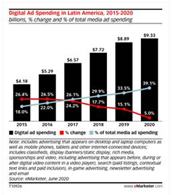
The heavy growth in digital ad spend has pushed six Latin American countries into the top 10 fastest growing digital ad markets. Columbia (11.2%), Chile (5.9%) and Brazil (5.2%) even came in ahead of China (5%).
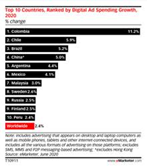
Digital ad spend in Latin America is more heavily weighted towards display advertising like social and video. However, search is high on the agenda for emerging markets like Columbia, Chile, Peru and Mexico.
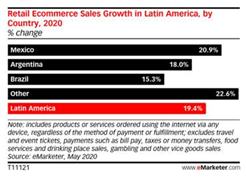
This is clearly evidenced in Mexico where respondents from the Asociacion Mexicana de Venta Online (AMVO) survey conducted by Netquest were 1.5 times more likely to reference search engines (64%) than social media (44%) before making a purchase.
Furthermore, a survey carried out by Rock Content in March 2020 highlighted that of the 55.8% respondents whose companies had implemented SEO strategies, 39.5% planned to increase their investment in SEO over 2020.
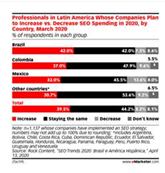
Search ads will assist brands in reaching potential customers with targeted ads to capitalise on the increased shift towards online purchases, as the ‘new normal’ transpires. Adaptation of digital strategies will enable businesses to influence customers at the awareness and consideration stages of the conversion funnel.
Institute of Export & International Trade report on the new government loan guarantee for high value exporters starting with £500m for Ford, which will secure thousands of British jobs.
The loans will be provided by the UK Export Finance (UKEF), the government’s export credit agency through the new ‘Export Development Guarantee’ (EDG).
The EDG funds support for businesses’ general export activities rather than individual contracts.
The purpose is to provide funding for multiple export contracts to allow companies to scale up and expand their premises and technologies.
Support for Ford
The £500m loan aligns with government objectives to grow UK exports through providing Ford with the funding to invest in electrification and to upskill and protect jobs.
Ford is one of the UK’s largest exporters supplying 15 markets on 6 continents with export revenue of £2.5 bn and manufacturing plants in Dagenham and Dunton, Essex.
Jing Daily report on the drastic measures Burberry has recently taken to reduce financial losses. Burberry’s CEO announced that the decline in revenue and subsequent profit were due to external market challenges, changes to customer behaviour and the transition the brand is undertaking.
However, poor earnings have been reported since 2016, as the Brand has struggled to maintain profitability since Angela Ahrendts left her position as CEO in 2014. By the end of 2018, Burberry’s financial position looked to be gaining strength.
But Burberry’s sales were reported to have gained by a percentage in the mid-teens in China in the first quarter of 2020, while losses on sales in the EMEIA (Europe, The Middle East and Africa) region reached 75%. The closure of stores in London, Paris and Milan were not the only catalyse of the reduction in revenue; the collapse of travel retail over lock down had a huge impact, as the brand has become dependent on Chinese consumers travelling internationally.
Burberry’s first tactic was to reduce prices to drive more sales with discounts of up to 50% in China and Australia, which devalued the brand in consumers’ eyes
Additionally, ongoing efforts to reconnect the brand with younger market segments through modernizing brand aesthetics, introducing a monogram and brand pattern, and modernizing its typography and logo didn’t hit the mark. The reason being that the story Burberry sought to tell was too centred in history and failed to communicate the brand values to the younger audience effectively.
Millennials and Gen Zers require a brand to clearly communicate what they are selling rationally and emotionally and would happily buy from a brand they perceive to be aspirational and inspiring rather than being swayed by heavy discounts.
Key takeaways from Burberry’s case study are to:
If you’d like to discuss any of the latest international marketing news included in this update, get in touch with our experts today.
More articles you might be interested in:
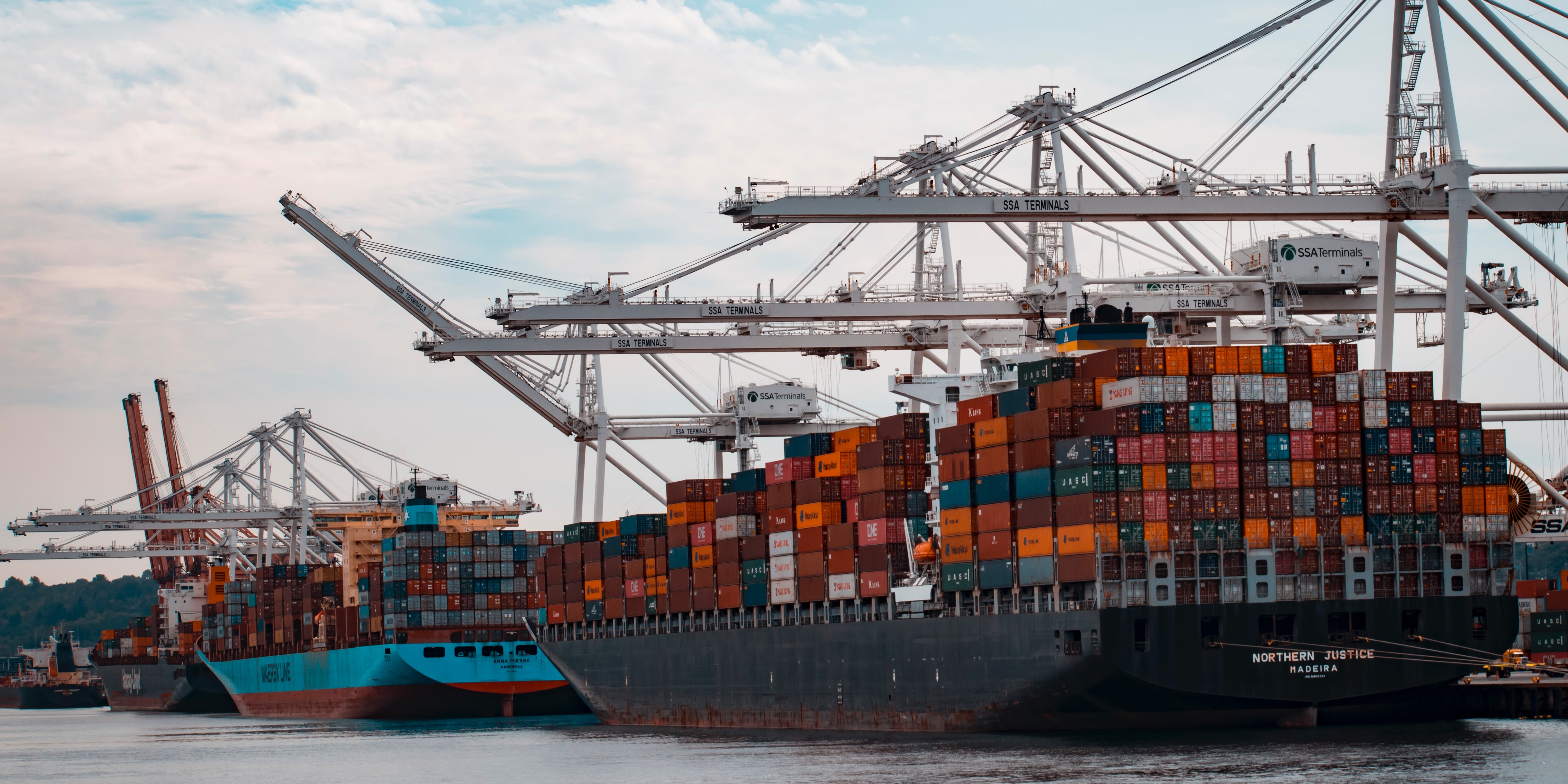
ClickThrough's Head of International, Alison Booth, tells us how to increase your profits through untapped markets during a recession.
Read more
Welcome to the latest round-up of all things digital. This is where we look at the latest updates in the world of PPC, SEO, Content and International...
Read more
Find out more about the latest updates in digital marketing. Featuring key updates from Google, demystifying meta descriptions, and checking in on...
Read more
Episode eight of The Assorted Digital Ramblings podcast is now out! Learn more about International Marketing with guest Alison.
Read more
In this week's International Marketing News, Andrea takes us through personalisation and privacy in retail and much more. Read on.
Read more
In this week's International Marketing News, Andrea takes us through new .au domain extensions, Bitcoin ATMs and more. Read on.
Read more
Join Andrea Diaz for this week's International Marketing news, covering walled garden investigations and more.
Read more
In the International Marketing News this week, Andrea Diaz takes us through the importance of implementing omnichannel strategies in 2022, Huawei...
Read more